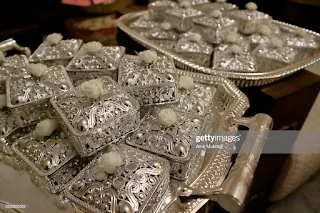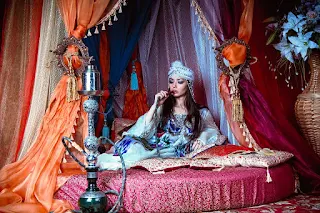General Habits
Apart from
different eating habits for different seasons, ayurveda prescribes day habits (Dincharya)
and night time habits (Ratricharya) as well.
· It is advised to wake up early
morning (Brahm muhurta) which is 2 hours prior to sunrise. It is also
said that brahm muhurta is “Vata kaal” which means gas/air in the
stomach/body is high which helps evacuating the intestine.
· One should not keep occupied in other
works(Reading newspaper, Mobile handling) while attending natural calls. Also
one should not force himself/herself for natural calls. Amoristic sentiment,
sorrow, fear and anger like emotions should be avoided while attending natural
calls.
· Washing hands and feet after
attending natural calls are called healthy for body and especially for eyes.
· One should brush (Wooden stick is
suggested) his teeth facing east or north peacefully in sitting position. Paste
of honey, long pepper (Pipali), black pepper (Kali Mirch) and Dried
Ginger (sunthi) or paste of rock salt with mustard oil can be used to
clean your teeth.
· Nasya or nasal intake of bitter oils
should be done every day. In morning if “Kapha” is in excess, mid-day if
“Pitta” is in excess and in evening if “Vata” is in excess in
body.
· One should shave or get hair and nail
cut every 5th day. Do not pluck your nasal hair as it will weaken
your eyesight. Hair combing should be done repeatedly for good hair. Looking self-image
in mirror is very beneficial.
· Daily work out should be practiced
especially during winters and spring however half of your strength exercise
should be practiced during rainy and summer seasons (Mid May to Mid Nov). Its
calms down the doshas of the body and increases efficiency with
improvement of digestive fire.
· “Abhyang” or oil massage is
recommended daily, particularly the feet, head and ears. Oil massage nourishes
all the 7 components of the body. Full body massage before bath is stressed in
ayurveda.
· Using of “Ubtan” which is
typically a mixture of gram flour and turmeric clams down the “Kapha”
and reduces “Med” (Fat). It softens the skin.
· Taking bath ignites digestive fire.
Morning bath is recommended. Cold water bath calms “Pitta” and warm
water bath provides strength to the body and calms “Vata” and “Kapha”.
Warm should be used below head only exception given to the patient of “Kapha”
and “Vata”. Continuous use of warm water on head effects eyesight and
hair. Do not bathe immediately after meal.
· Ayurveda recommends eating in the
morning and evening only. However also mentions that when a person becomes
hungry, that is his time to eat. Eating and attending natural calls, both
should be done in a place of peace or loneliness.
· Pomegranate or fruits should be eaten
before meal. Banana and Cucumis melo var. flexuosus (Kakadi) should be
avoided before meal. Proper meal should start from sweet dishes, salty and sour
in the middle and should end with bitter, pungent and astringent. Fruits which
should be avoided in morning are Buchanania lanzan(Chironji),
Blueberries(Jamun), Indian Jujube(Ber), Cluster fig(Gular),
Tamarind(Imli), Asian Palmyra(Taal ka Phal), Dried
Ginger(Sunthi), Coconut(Nariyal), Sesame(Til), Mango(Aam),
Banana(Kela) and Indian gooseberry(Amla).
· Foods when eaten hot, cold or dry
destroy body strength. One should not eat very fast or very slow. Food which is
sweet contributes to blood, sour contributes to marrow, salty contributes to
bones, pungent contributes to fat, bitter contributes to flesh and astringent
contributes to sexual hormones.
· Sip water between two types of food
in the middle of the meal. Sipping water in the beginning of meal makes a
person weak and sipping at the end makes obese but small amount is allowed at
the end called “Anupaan”. “Kapha” in the body increases
immediately after eating, “Pitta” during digestion and “Vata”
when completely digested. Ayurvedic smoking is permitted after meal to calm
down the “Kapha”.
· Food which gives immediate strength:
Fresh flesh, newly harvested grains, milk products, “Ghee” or clarified butter
and warm water bath. Aged Flesh, fresh
curd, morning sex and morning sleep destroys strength quick.
· 100 mild steps after food are
suggested to settle the food eaten. It relieves your stomach, waist and knees.
After walk, one should sleep straight for 8 breaths, and then should turn on
right for next 16 breaths and then to left for 32 breaths. Afterwards one can
sleep as he/she wants however for good digestion; left side is recommended because
“Jatharagni” is located on the left above naval. Woven cot is best for
sleeping. Sleeping on hard surface aggravates “Vata”.
· Things which should be avoided after
meal are: Too much sleep, too much sitting, too much of liquid intake, exposure
to heat or sun, swimming etc.
· Day sleeping is allowed only in
summer season as it increases “Kapha” in the body. However who is
habituated of sleeping during daytime must sleep otherwise their “Vata”
will get aggravated. Also people who work out, who mates during night, does
field work, tired, who suffers from diarrhea, breathing problems, gas/air
trouble, whose “Kapha” is low, whose health is destroyed by liquors,
kids or elderly who eats less should sleep in day.
· One should never accept food offered
by your enemy or a prostitute. One should not sleep on a broken bed. One should
not sleep in a cave, temple or under a tree alone in night.
· Five things one should not do in evening:
Eating, Mating, Sleeping, Studying and Street walking.
· Moon light is coolant, quenches
thirst and calms “Pitta” and heat in the body. When accompanied with
dew, moonlight increases “Vata” and “Kapha” as well.
· One should not eat heavy food in
night and should eat in the early hours of night. Suppressing strong desire of
sex can cause diabetes and makes the person obese and lazy. Day mating is only
allowed from mid-May to mid-July (Grishm Ritu).
· Night watching causes dryness in body
decreasing “Kapha”. Sleeping well in night keeps the doshas balanced.
Drinking water at the end of night i.e. before sunrise has innumerable
benefits.
Note: “Vata”, “Pitta” and “Kapha” are three doshas of body
mentioned in ayurveda which in balanced state keeps the person healthy.
“Vata” is gas or air in your body. If aggravated, it causes
joints pain and gas trouble.
“Pitta” is acid and heat in the body. If aggravated, it causes burning sensation, thirst, over hunger
etc.
“Kapha” is cough or lubrication which lubricates the body.
<script async src="https://pagead2.googlesyndication.com/pagead/js/adsbygoogle.js?client=ca-pub-7204440794189180"
crossorigin="anonymous"></script>



































